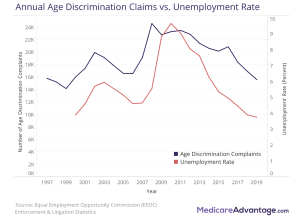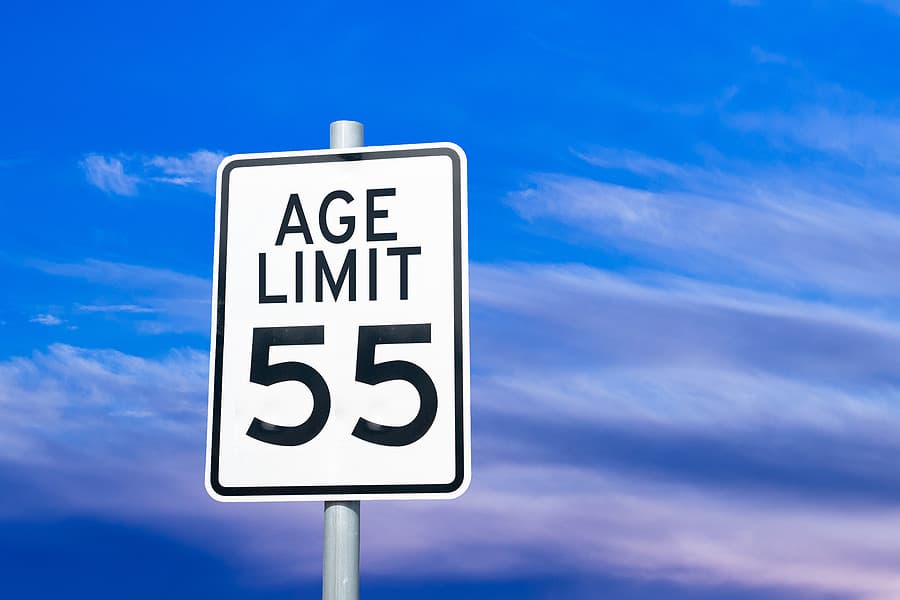The Covid-19 pandemic has confirmed a lot of what we already knew about the workforce: people would work in their pajamas every day if given the opportunity.
But our 2020 confirmations aren’t limited to just those who are still in the workplace. Rather, it’s the millions of Americans who have found themselves out of work right now that offer perhaps the most glaring testimony of what we’ve learned — but haven’t yet learned from.
History tells us that unemployment rates by age are fairly linear relative to unemployment rates as a whole, and those 45 and over actually experience the lowest unemployment rates overall.
However, history also tells us two other things that are vital for HR managers to be hyper-aware of.
First, older workers are often among the first targets during times of mass layoffs and are among the last people invited to re-enter the workforce afterward: They command higher salaries. They are often perceived as less progressive or technologically adept. Their tenure at a new company may be shorter since they are nearer retirement. The list of excuses from some hiring managers goes on.
Secondly, when the unemployment line lengthens, so too does the line for filing age-discrimination suits and complaints. In fact, you can see an almost parallel trajectory between unemployment rates and age-discrimination complaints highlighted below:

When the pandemic struck and downsizing became imminent, it was younger workers (many of whom work in service industries and other positions at high risk for Covid-19-related layoffs) and older workers (see the list of excuses above) who were disproportionately affected. Notably, this is more than 50 years after the passing of the Age Discrimination in Employment Act, which bars workplace discrimination against persons 40 years and older.
This presents a forecast of increased age-discrimination complaints and lawsuits being loaded into the hopper in the aftermath of the economic shutdown. As written about in the American Business Journal, labor and employment attorneys across the nation have reported a flood of incoming complaints about layoffs and recalls involving older workers. They’re also predicting a large volume of state and federal lawsuits to emerge as a result of the pandemic.
Where Age Discrimination Lawsuits May Surface
Now, the idea that there may be a surge in age-discrimination lawsuits stemming from a time when the unemployment rate hit its highest peak since the Great Depression isn’t exactly a jarring prediction. But what’s interesting, as indicated by MedicareAdvantage.com report The Worst States for Workplace Age Discrimination, is where we might expect to see more of these types of lawsuits and complaints.
Historical data from the Equal Employment Opportunity Commission (EEOC) from 1997 to 2019 was used to determine which states have the highest historical rates of workplace age-discrimination complaints and the states where the rate of such complaints is increasing the fastest. In other words, where the rate of age-discrimination complaints is already bad and where it’s getting worse.
In Mississippi, there were 9.1 cases of age-discrimination complaints per 100,000 people between 1997 and 2019, which was the most of any state. Arkansas (8.5 per 100,000 people), Pennsylvania (8.0), Georgia (7.7), and Tennessee (7.7) followed.
For perspective, Maine had just 0.2 complaints per 100,000 people, the lowest of any state. (Idaho, Montana, Oregon, and New Hampshire all registered rates of fewer than 1 per 100,000).
Montana, while having among the lowest rates overall during the study’s 23-year period, saw a 250% increase from 2018 to 2019. New Hampshire and North Dakota, meanwhile, each experienced a 43% decline in workplace age-discrimination suits from 2018 to 2019.
We can also use data from the U.S. Bureau of Labor Statistics to identify states that have seen the biggest spikes in unemployment during the Covid-19 era.
Most states reached their historical unemployment highs in April, and some states that surpassed the national unemployment rate of 14.7% that month include Mississippi (16.3%), Pennsylvania (16.1%), and Tennessee (15.5%). Nevada — which had a whopping 30.1% unemployment rate in April — was also seventh on the list for workplace age-discrimination complaints.
Another piece of the puzzle to factor in is the percentage of residents ages 55 to 64 in each state, which can give us an idea of where the older workforce is, and therefore where there is a higher potential for workplace age-discrimination.
The Verdict Is In
Factoring all of the above considerations, we can pinpoint a handful of states that seem primed for a surge in workplace age-discrimination complaints into 2021.
Pennsylvania. The Keystone State had 8.0 complaints of workplace age-discrimination per 100,000 people during the MedicareAdvantage.com study period. Pennsylvania also experienced a peak unemployment rate of 16.1% in April, which was well above the national average. And the state’s population of residents 55 to 64 in 2019 was 14.5%, which is above the national average of 13.2%.
With a high number of seniors, a high peak unemployment rate, and a historically high rate of age-discrimination complaints, Pennsylvania has all the ingredients for a perfect storm of looming lawsuits.
Other states that fit the mold using the formula above include:
Tennessee. The state displayed the fifth-highest rate of workplace age-discrimination complaints during the study period while also experiencing an unemployment peak of 15.5%, with 13.4% of its population age 55 to 64.
Rhode Island. It saw the fifth-highest increase in age-discrimination complaints from 2018 to 2019, experienced an unemployment rate peak of 18.1%, and has a population of 55-64 year-olds that makes up 14.8% of the total state population.
Kentucky. The state saw the 4th-highest increase of age-discrimination complaints from 2018 to 2019 and a peak unemployment of 16.6% in April 2020. Additionally, 13.7% of the state’s population is 55-64.
Vermont. It had the sixth-highest increase of age-discrimination complaints from 2018 to 2019, and 15.8% of the state’s population is 55-64, while its unemployment rate peaked at 16.5%.
Delaware. The state had the tenth-highest increase of age-discrimination complaints from 2018 to 2019. Its unemployment rate peaked at 15.9%, and 14.4% of the state’s population is 55-64.
All of this means that as the workforce gradually returns to its previous form, folks from all over the country will be called back or re-hired, or they’ll re-enter the workforce through a different door. The considerations above allow us to use data to anticipate the states where HR departments may need to brace for a wave of workplace age-discrimination complaints as we enter this new phase.
